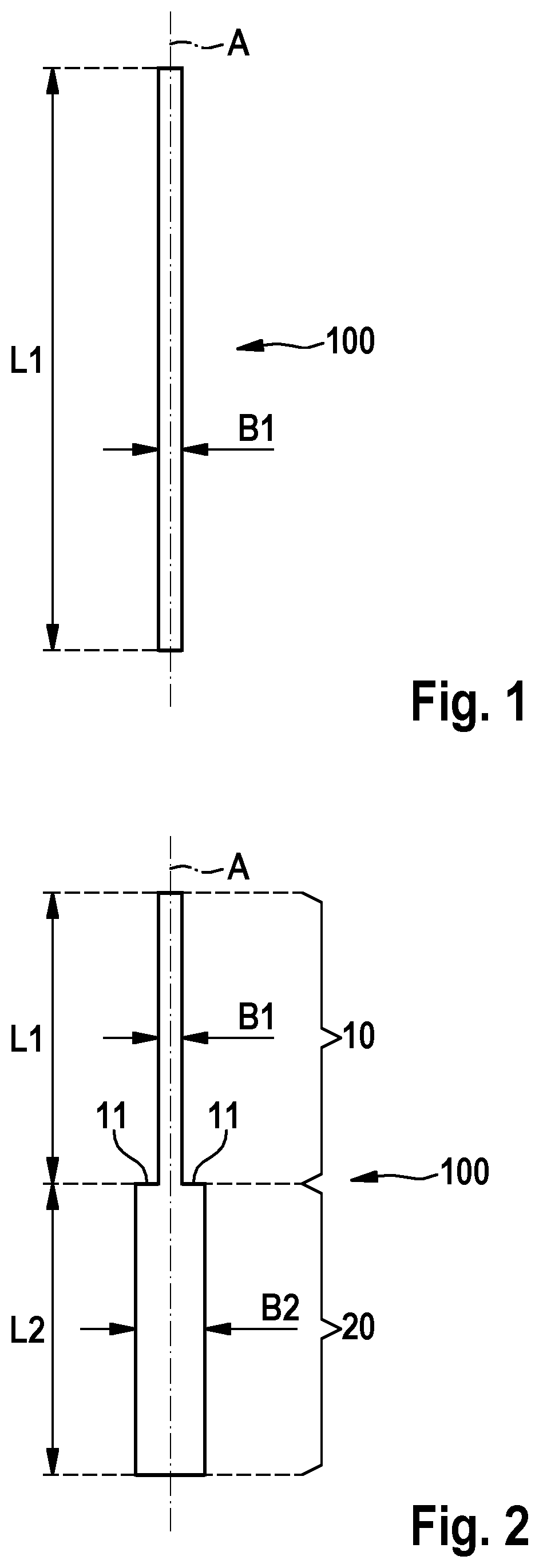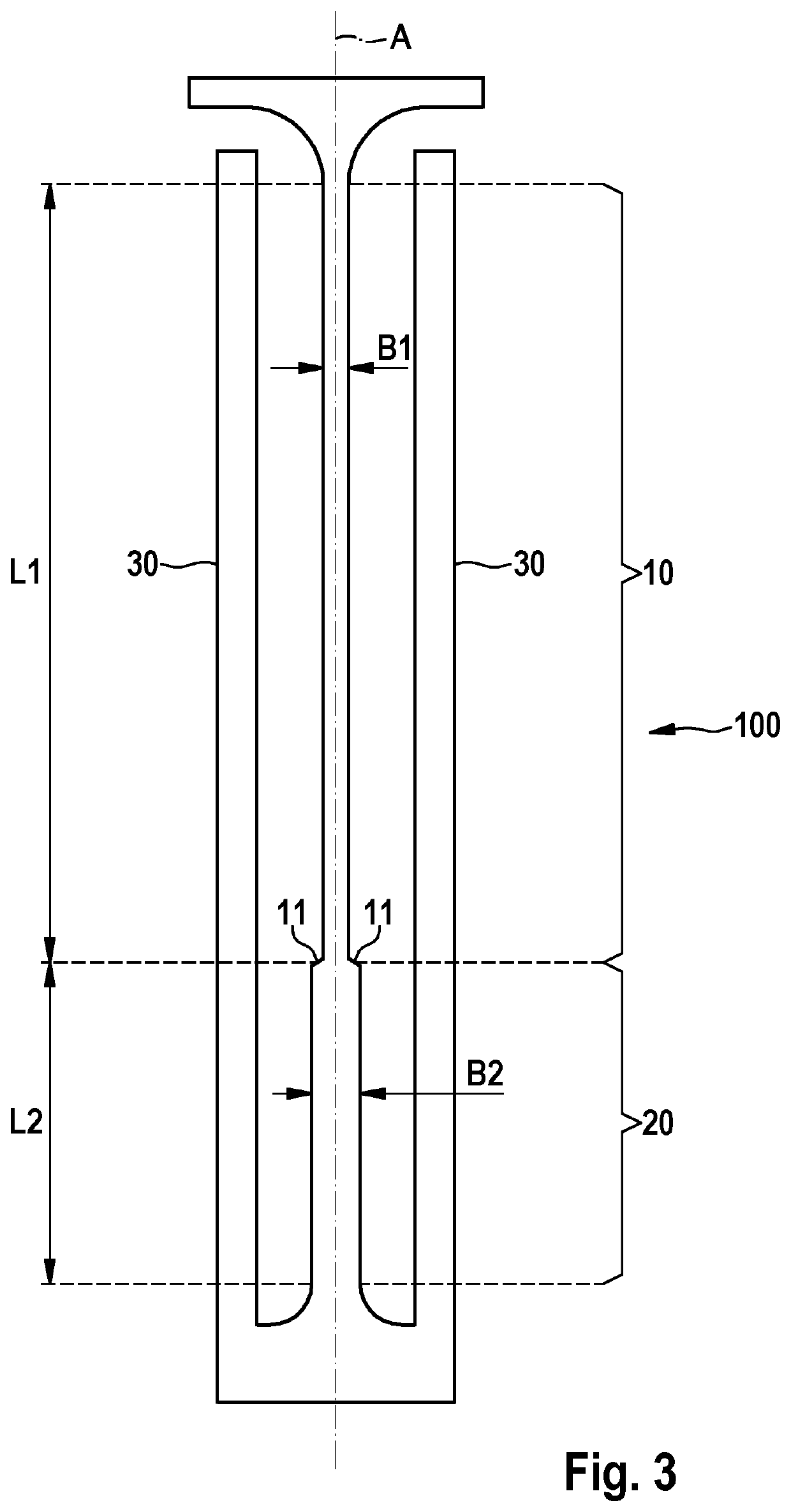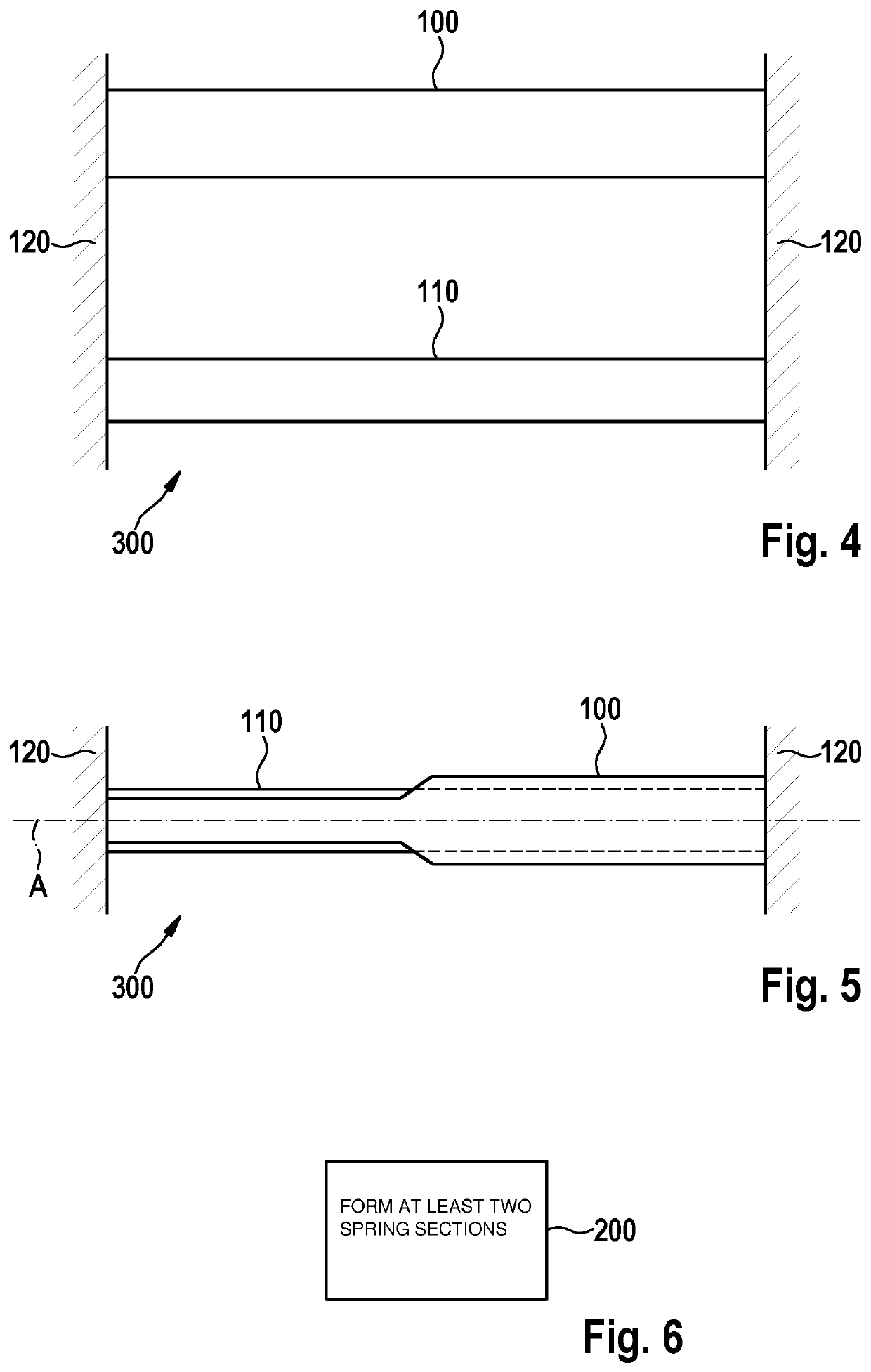Micromechanical spring for a sensor element
a sensor element and micromechanical technology, applied in the direction of speed/acceleration/shock measurement, flexible microstructural devices, instruments, etc., can solve the problems of wide production variation, virtually impossible to shift the interference mode without shifting the use mode, etc., and achieve the effect of advantageously minimizing the risk of breakage of the micromechanical spring
- Summary
- Abstract
- Description
- Claims
- Application Information
AI Technical Summary
Benefits of technology
Problems solved by technology
Method used
Image
Examples
Embodiment Construction
[0032]An example embodiment of the present invention provides a micromechanical spring for a sensor element, which includes an expanded degree of design freedom with respect to a specific operating characteristic in the form of an interference mode. In this way, it is possible to advantageously influence both the detection mode as well as the interference mode of the micromechanical spring, as a result of which an operating behavior of the sensor element including the micromechanical spring may be designed according to specifications.
[0033]Detection mode (use mode) and interference mode are understood below to mean frequencies or frequency ranges in a frequency space, which define frequencies for an intended excitation (detection mode) or an unintended excitation (interference mode) of mechanical spring 100. The two cited modes in this case represent a first mode and a second mode, there actually being an infinite number of modes available which, with increasing number of modes, req...
PUM
 Login to View More
Login to View More Abstract
Description
Claims
Application Information
 Login to View More
Login to View More - R&D
- Intellectual Property
- Life Sciences
- Materials
- Tech Scout
- Unparalleled Data Quality
- Higher Quality Content
- 60% Fewer Hallucinations
Browse by: Latest US Patents, China's latest patents, Technical Efficacy Thesaurus, Application Domain, Technology Topic, Popular Technical Reports.
© 2025 PatSnap. All rights reserved.Legal|Privacy policy|Modern Slavery Act Transparency Statement|Sitemap|About US| Contact US: help@patsnap.com



